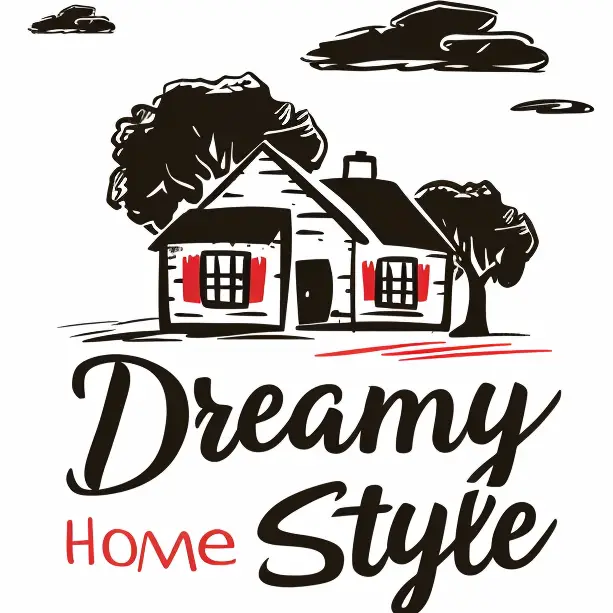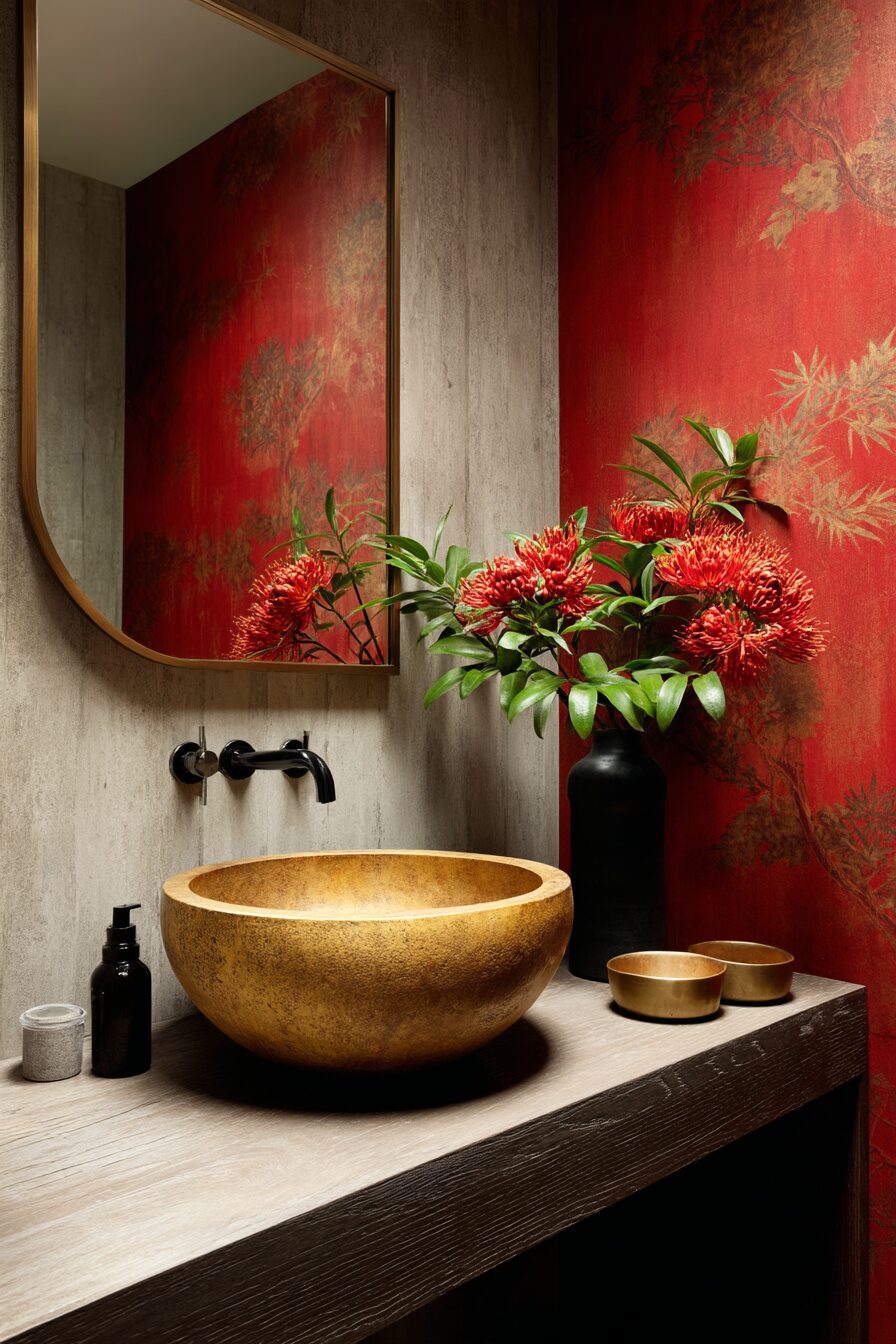Everyone deserves a personal retreat from the world’s chaos, and your bathroom offers the perfect opportunity to create that haven.
Beyond mere functionality, a thoughtfully designed bathroom can become your daily escape, where stress melts away and tranquility reigns supreme.
The following ideas will guide you through transforming your utilitarian space into a soothing sanctuary that rivals the most luxurious spas.
Spa-Inspired Natural Elements
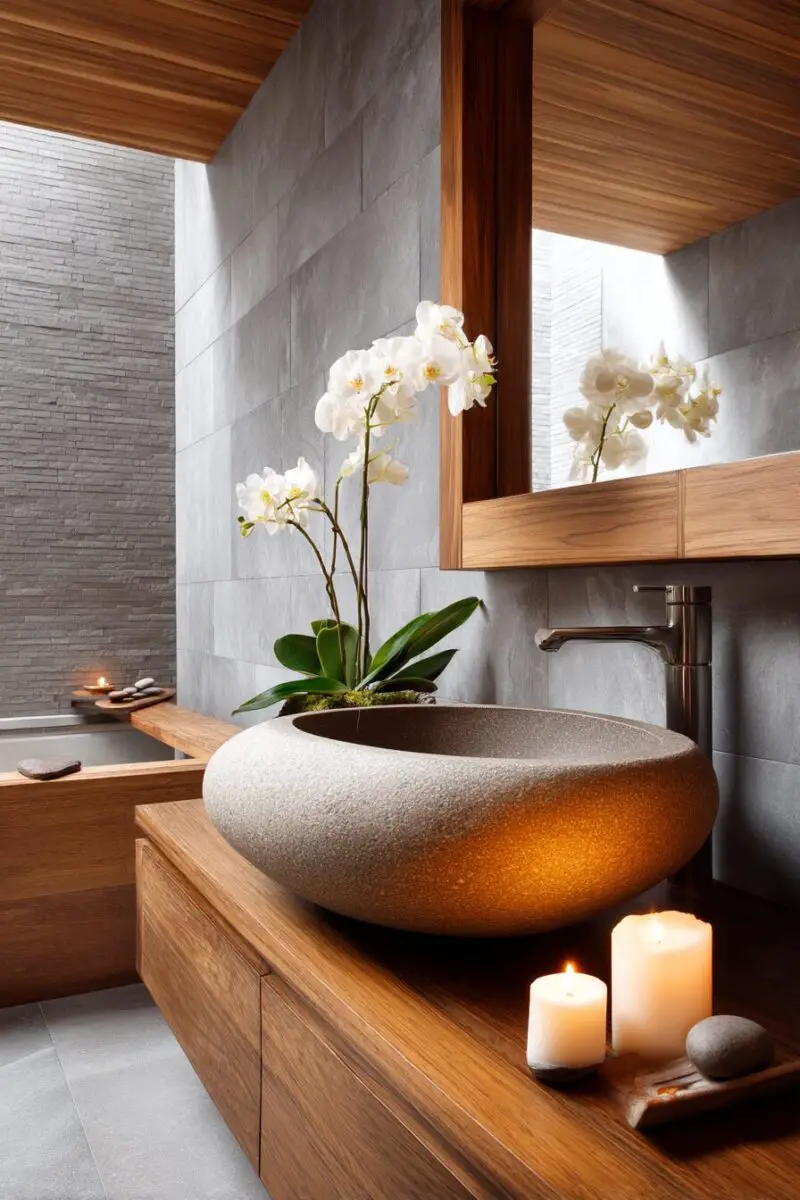
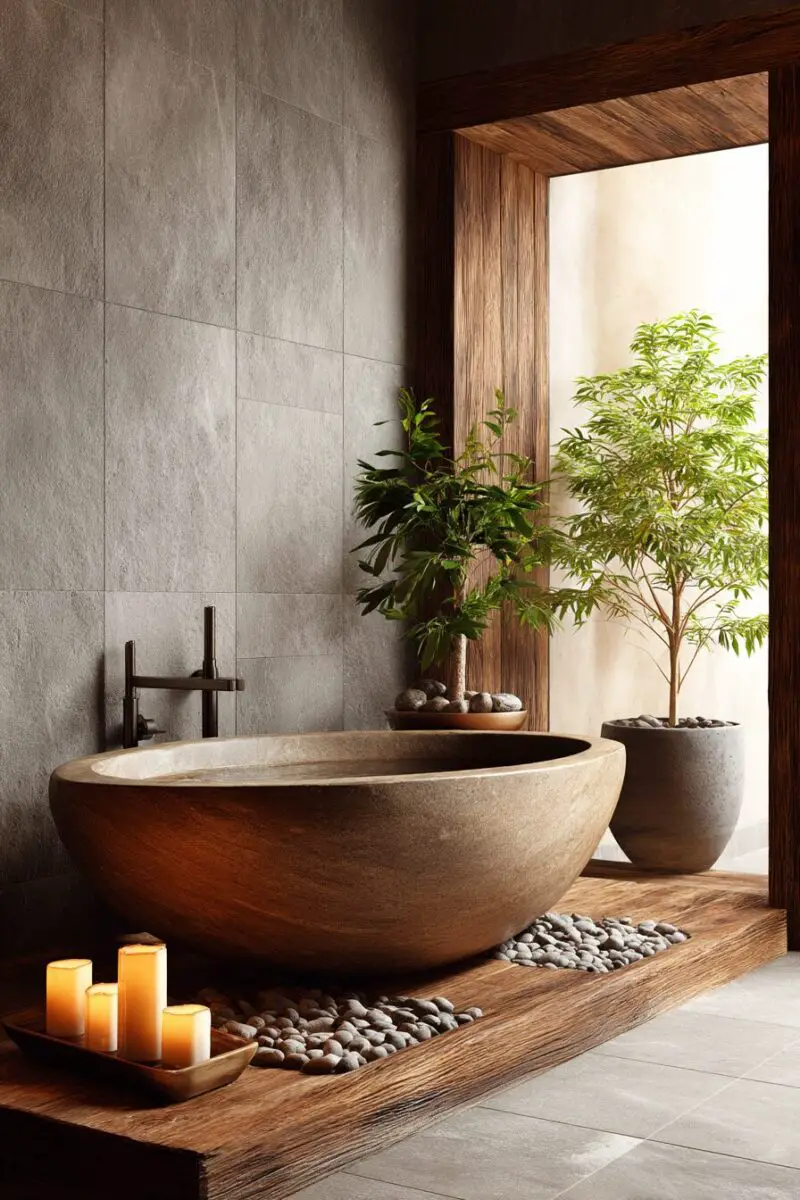
Nothing creates a more serene bathroom atmosphere than incorporating elements directly inspired by high-end spas.
The secret lies in bringing nature indoors through carefully selected materials and accents that engage all your senses.
Install a wooden bath mat or teak shower floor that warms underfoot while introducing an organic element to your space.
Stones and pebbles can transform ordinary areas into extraordinary features, whether as a shower floor insert or decorative basin fillers.
Plant life thrives in bathroom environments, with humidity-loving varieties like pothos, peace lilies, and orchids purifying the air while adding vibrant touches of green.
A small bamboo bench or stool introduces both functionality and natural texture, providing a perfect perch for self-care rituals.
Water features aren’t just for outdoor spaces – a small tabletop fountain creates gentle ambient sounds that mask household noise and enhance relaxation.
Natural light should be maximized wherever possible, with sheer window coverings that maintain privacy while allowing sunlight to filter through.
For evening ambiance, consider installing dimmer switches that let you control brightness according to your mood.
Wooden accessories like toothbrush holders, soap dishes, and vanity trays maintain the natural theme while offering practical storage solutions.
Natural fiber baskets made from seagrass, water hyacinth, or jute provide stylish containment for towels, toiletries, and bathroom necessities.
Incorporate a small meditation corner if space allows, with a comfortable cushion and perhaps a small shelf for inspirational reading or aromatherapy supplies.
Natural stone surfaces like marble, granite, or slate introduce unique patterns and textures while remaining practical for wet environments.
Sustainable materials aren’t just environmentally responsible – they create visual warmth through their authentic imperfections and variation.
Remember that natural materials generally require specific care routines to maintain their beauty in humid bathroom environments.
Luxurious Freestanding Bathtub Sanctuary
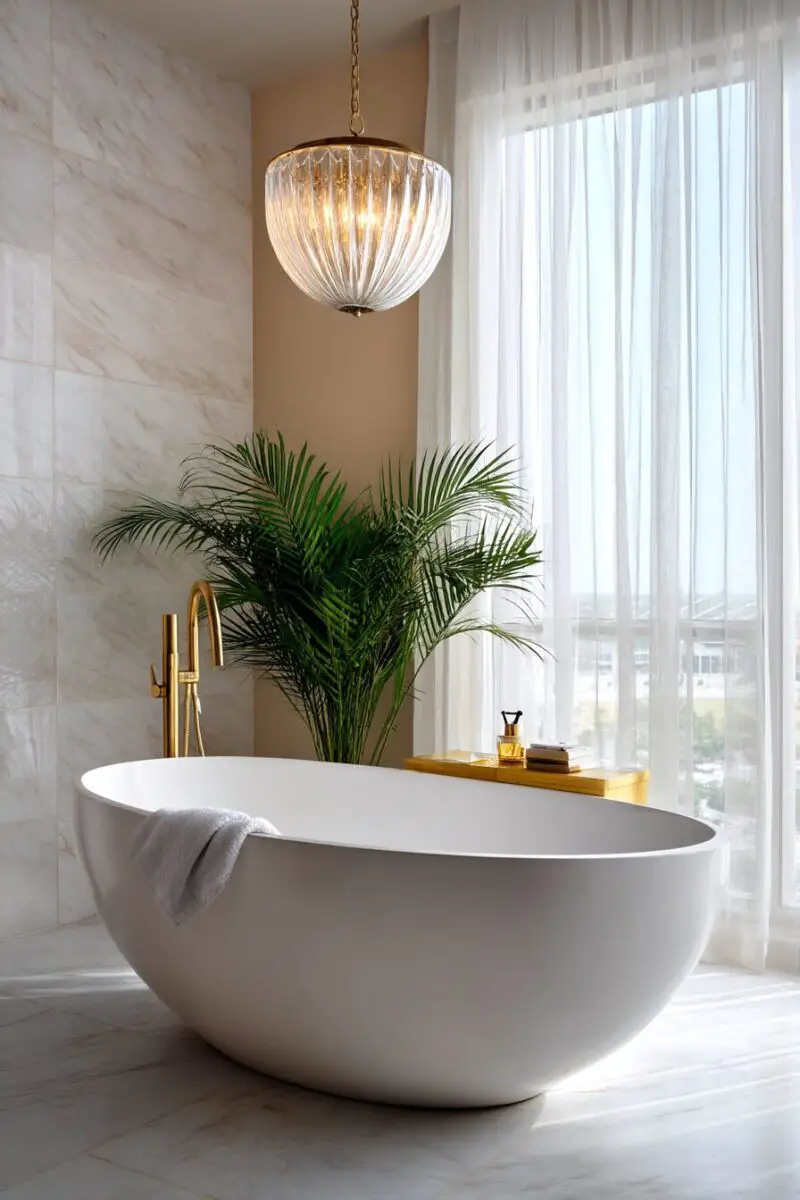

Few bathroom elements make a more dramatic statement than a freestanding bathtub positioned as the room’s centerpiece.
These sculptural pieces instantly communicate luxury while promising deep, contemplative soaks away from life’s demands.
Modern styles range from sleek, minimalist shapes to ornate, claw-foot designs that evoke vintage glamour and old-world charm.
Material choices significantly impact both aesthetics and experience, with options including acrylic, cast iron, copper, stone, and even wood for truly unique installations.
Position your tub to take advantage of any available views, whether facing a window with natural scenery or an interior focal point like a fireplace or artwork.
Practical considerations include ensuring proper floor support for heavier materials and accessible plumbing configurations for your chosen design.
A tub caddy stretching across your bath creates a dedicated space for essentials like books, candles, and perhaps a glass of wine or cup of tea.
Install a chandelier or statement pendant light directly above your tub to create a magical glow during evening soaks.
Nearby storage for plush towels and bath accessories ensures everything remains within arm’s reach during your bathing ritual.
Temperature control becomes crucial with freestanding tubs, making a small side table for adjusting water or a modern thermostatic faucet invaluable additions.
Surrounding your tub with plants creates a greenhouse effect that transforms ordinary bathing into a tropical retreat experience.
For ultimate luxury, explore heated elements – from towel warmers to radiant floor heating that makes the journey to and from your bath entirely comfortable.
The space around your tub matters almost as much as the fixture itself, with ample room needed for both physical and visual breathing space.
Remember that cleaning requirements differ significantly between tub materials, with some demanding specific products and regular maintenance routines.
Design Your Dream Room in Minutes!
🏡 Start Creating FREE →Ambient Lighting for Unparalleled Relaxation
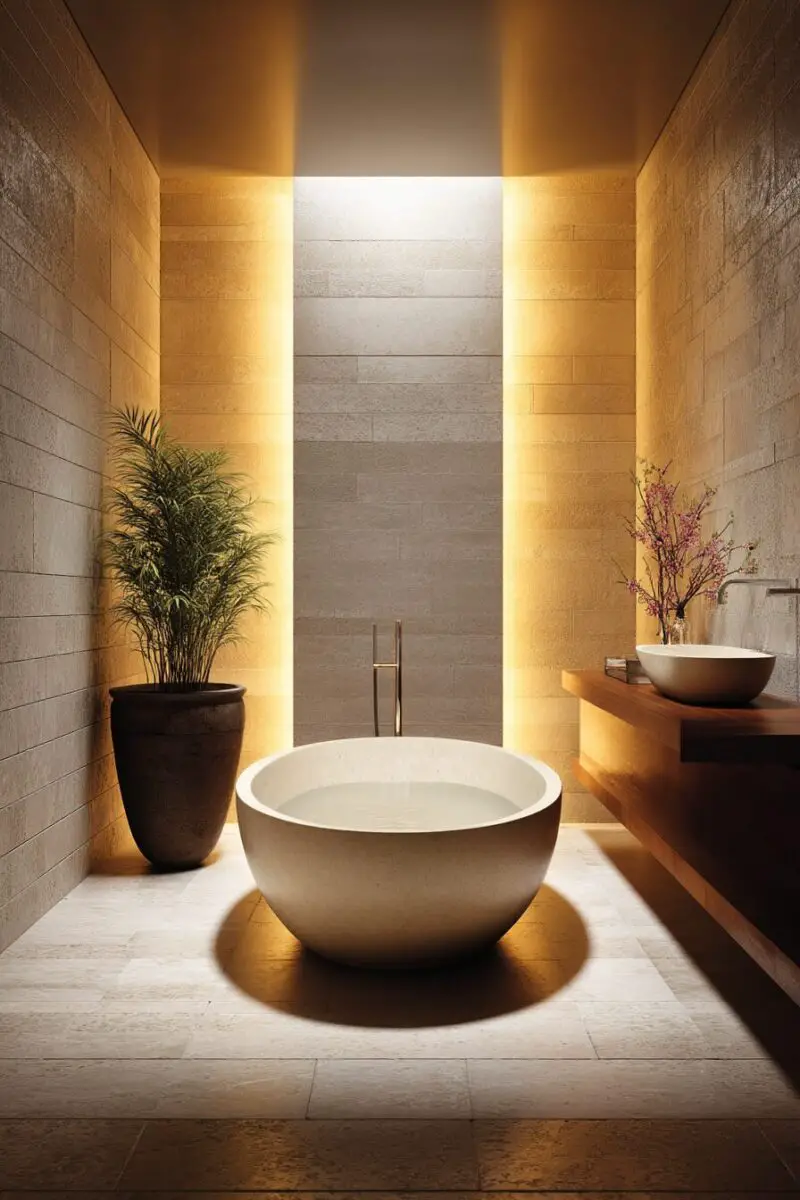
Lighting transforms a standard bathroom into a mood-enhancing retreat when thoughtfully layered and controlled.
The key lies in creating multiple light sources at different heights that can be adjusted according to activities and desired atmosphere.
Begin with practical task lighting around mirrors and vanities that provides shadow-free illumination for daily grooming routines.
Recessed ceiling fixtures offer general illumination without visually interrupting your carefully designed space.
Sconces mounted at eye level create flattering light that minimizes harsh shadows while adding architectural interest to walls.
Candle lighting, whether authentic or flameless LED versions, introduces an irreplaceable warmth and movement that instantly relaxes the mind.
Dimmer switches represent one of the most impactful and cost-effective bathroom upgrades, allowing infinite adjustment between functional brightness and spa-like ambiance.
Smart lighting systems take this control further, enabling preset scenes or voice-activated changes while you’re already settled in the bath.
Accent lighting directed at architectural features, artwork, or decorative elements adds visual interest and creates depth within the space.
Natural light should be maximized during daylight hours through windows, skylights, or solar tubes that connect your bathroom to outdoor rhythms.
Window treatments that allow for privacy while maintaining light flow become essential, with options like frosted glass, light-filtering shades, or strategically placed plants.
Remember that different lighting needs emerge as you age, with people over 60 typically requiring up to 80% more light than younger adults for the same visual acuity.
When installing new fixtures, always verify they’re rated for bathroom use with appropriate IP ratings that ensure safety in humid, wet environments.
Lighting around mirrors deserves special attention, ideally coming from both sides and above to eliminate unflattering shadows during grooming.
TRENDING NOW
13 Wabi Sabi Bathroom Ideas You'll LoveTactile Textures for Sensory Comfort

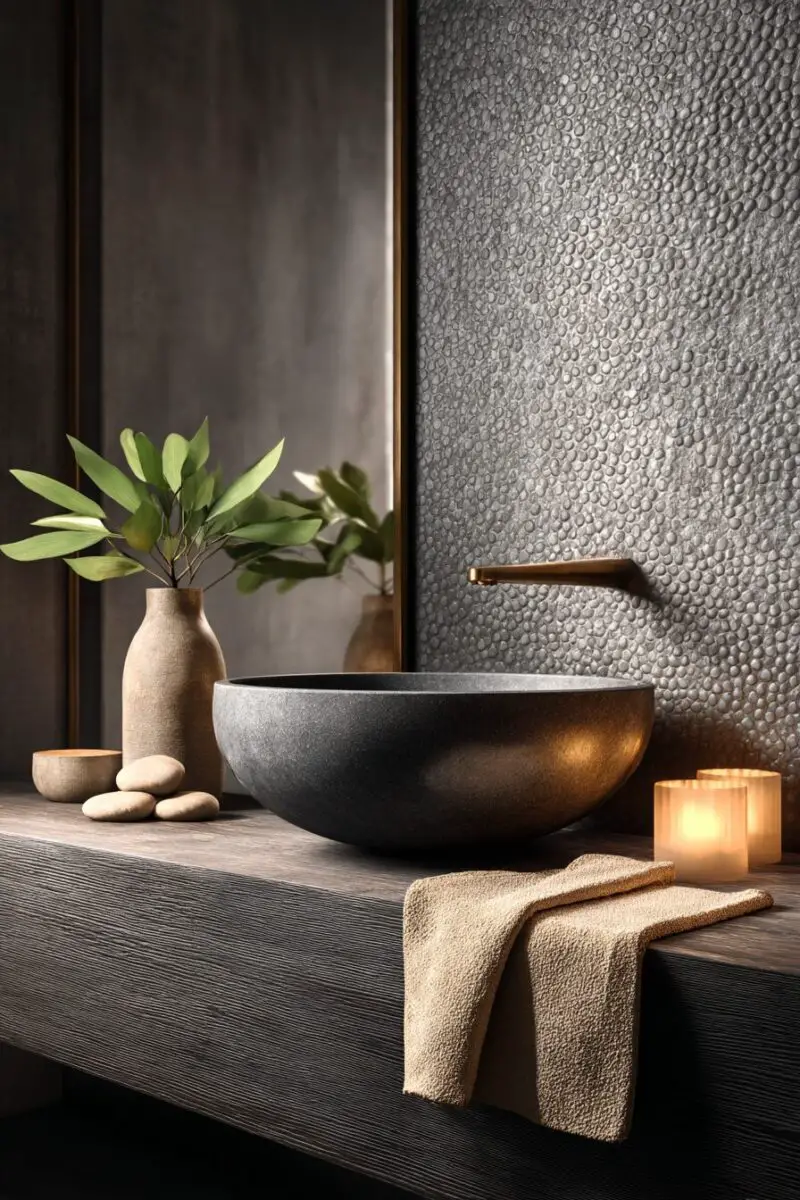
The secret to truly cozy bathrooms often lies in the thoughtful layering of varied textures that invite touch and create visual warmth.
Every surface presents an opportunity to enhance comfort through tactile consideration, from flooring to walls to the smallest accessories.
Begin with underfoot experiences – plush bath mats in high-pile cotton, memory foam, or absorbent microfiber create a luxurious landing when stepping from the shower or tub.
Wall textures can transform from standard smooth paint to more interesting surfaces like textured wallpaper, shiplap, beadboard, or even partial stone accents.
Introduce fabric through shower curtains in heavyweight materials like waffle-weave cotton, linen blends, or textured polyester that hang with substantial presence.
Towels represent perhaps the most important textile investment, with high-quality Turkish or Egyptian cotton offering superior absorbency and a plush feel against skin.
Bathrobes hanging from hooks or warming on heated towel bars extend the comfort zone beyond the actual bath or shower experience.
Window treatments contribute significant textural interest, with options ranging from woven wood blinds to linen Roman shades that filter light beautifully.
Wooden elements introduce warmth through their natural grain patterns, whether appearing as vanities, shelving, seating, or decorative objects.
Metal fixtures and hardware contribute their own textural qualities, with brushed nickel, oil-rubbed bronze, or unlacquered brass developing unique patinas over time.
Shower experiences improve dramatically with upgraded showerheads that transform water delivery into a textural event – from rainfall to massage settings.
Contrast remains essential when layering textures, with the most visually interesting bathrooms incorporating both rough and smooth, matte and glossy, soft and hard elements.
Remember that bathroom textures must withstand moisture and frequent cleaning, making material selection particularly important in this environment.
The sounds created by different materials also contribute to the sensory experience – the quiet padding on a plush rug versus the solid echo of tile creates entirely different atmospheres.
Aromatherapy and Sensory Delights

Scent remains one of the most powerful yet underutilized elements in bathroom design, capable of instantly shifting mood and creating memorable experiences.
The bathroom offers a unique opportunity to incorporate aromatherapy into daily routines rather than as an occasional luxury.
Essential oil diffusers designed specifically for humid environments introduce consistent fragrance without the fire risk of traditional candles
Shower steamers – solid pucks that dissolve and release scent when exposed to hot water – transform ordinary showers into aromatic experiences.
For baths, high-quality bath salts, bombs, or oils infused with essential oils create multi-sensory experiences that benefit both mind and body.
Certain scents serve specific purposes: lavender and chamomile promote relaxation, while citrus and mint energize and refresh.
Eucalyptus bundles hung from shower heads release therapeutic oils when exposed to steam, clearing sinuses and creating spa-like environments.
Scented candles enclosed in hurricane glasses or lanterns provide both atmospheric lighting and aromatic benefits during longer soaking sessions.
Drawer liners and sachets infused with favorite scents keep linens and stored items fresh between uses.
Luxury hand soaps, lotions, and hair products contribute significantly to the overall scent experience – choose formulations with complementary fragrances.
Electronic options include programmable diffusers that can be scheduled to release scent at specific times, perhaps preparing the bathroom before your arrival home.
Remember that less often means more with scent – subtle fragrances prevent the overwhelming feeling that can occur in smaller spaces.
Seasonal rotation of scents creates memorable markers throughout the year, from lighter floral notes in spring to warmer, spicier options in winter months.
For those sensitive to fragrances, consider natural deodorizing options like activated charcoal, baking soda, or zeolite that absorb unwanted odors without introducing new scents.
Many luxury hotels and spas develop signature scents that become part of their brand identity – consider creating your own signature bathroom blend that welcomes you home.
Space-Saving Solutions for Small Bathrooms
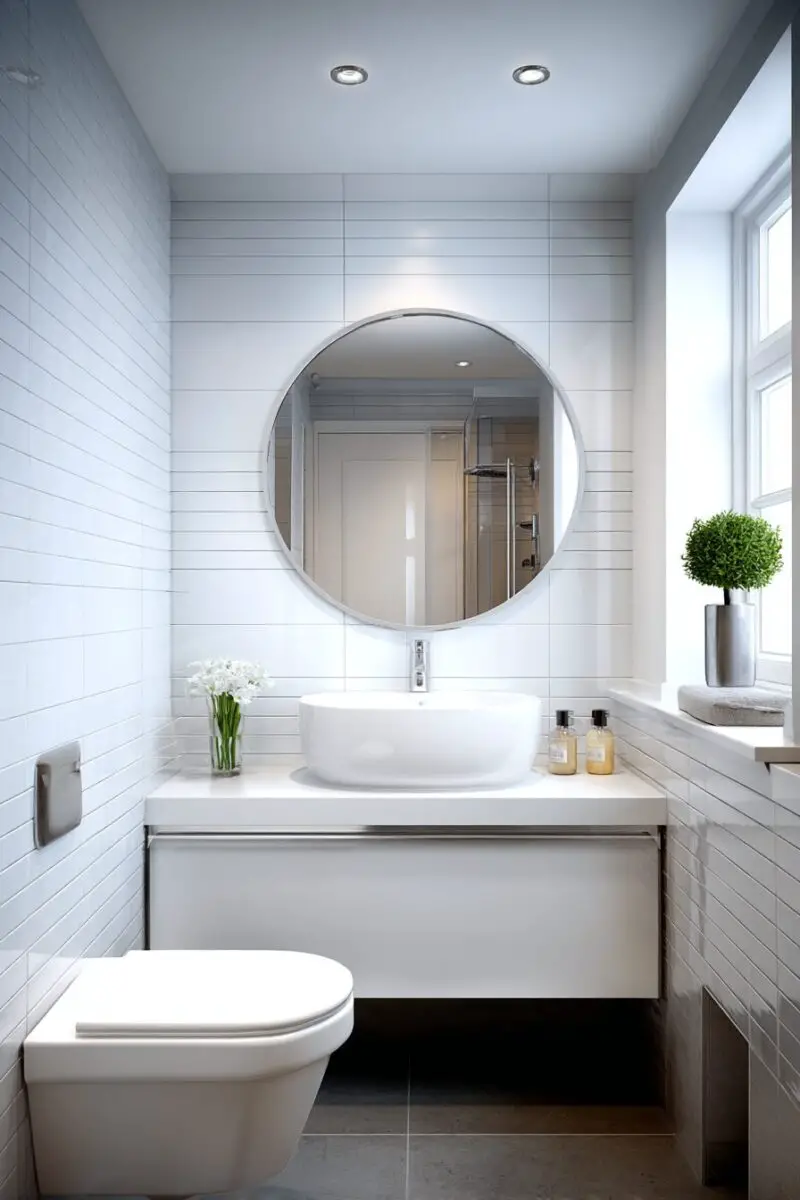
Limited square footage presents unique challenges but also opportunities to create exceptionally efficient and cozy bathroom retreats.
The key lies in maximizing every vertical inch while maintaining visual spaciousness through strategic design choices.
Wall-mounted fixtures including toilets, sinks, and vanities create floor clearance that makes small spaces appear larger while simplifying cleaning routines.
Corner installations take advantage of often-wasted space, with specialized sinks and showers designed specifically for these challenging areas.
Glass shower enclosures without frames create visual continuity that makes the entire bathroom feel larger compared to shower curtains or obscured glass.
Extend tile work from floor to ceiling, creating uninterrupted visual lines that draw the eye upward and emphasize height rather than limited width.
Mirrors represent powerful tools for small spaces, with oversized or wall-to-wall installations instantly doubling perceived space through reflection.
Recessed medicine cabinets and niches carved into wall cavities provide storage without protruding into precious bathroom square footage.
Towel storage requires creative thinking – consider heated towel bars that double as radiators or decorative ladders that utilize vertical space.
Under-sink areas often waste valuable storage potential – custom or modular solutions that navigate around plumbing maximize this often-overlooked space.
Lighting plays a crucial role in small bathrooms, with multiple sources eliminating shadowed corners that can make spaces feel cramped.
Color choices significantly impact perceived size, with lighter tones generally creating more expansive feelings in limited spaces.
Pattern scale matters tremendously, with smaller spaces typically benefiting from either very small patterns or larger ones that create fewer visual breaks.
Remember that smaller bathrooms have proportional advantages – luxury materials become more affordable when covering less square footage.
TRENDING NOW
Creative Kids Bathroom Ideas For A Fun ExperienceStatement Walls for Visual Drama
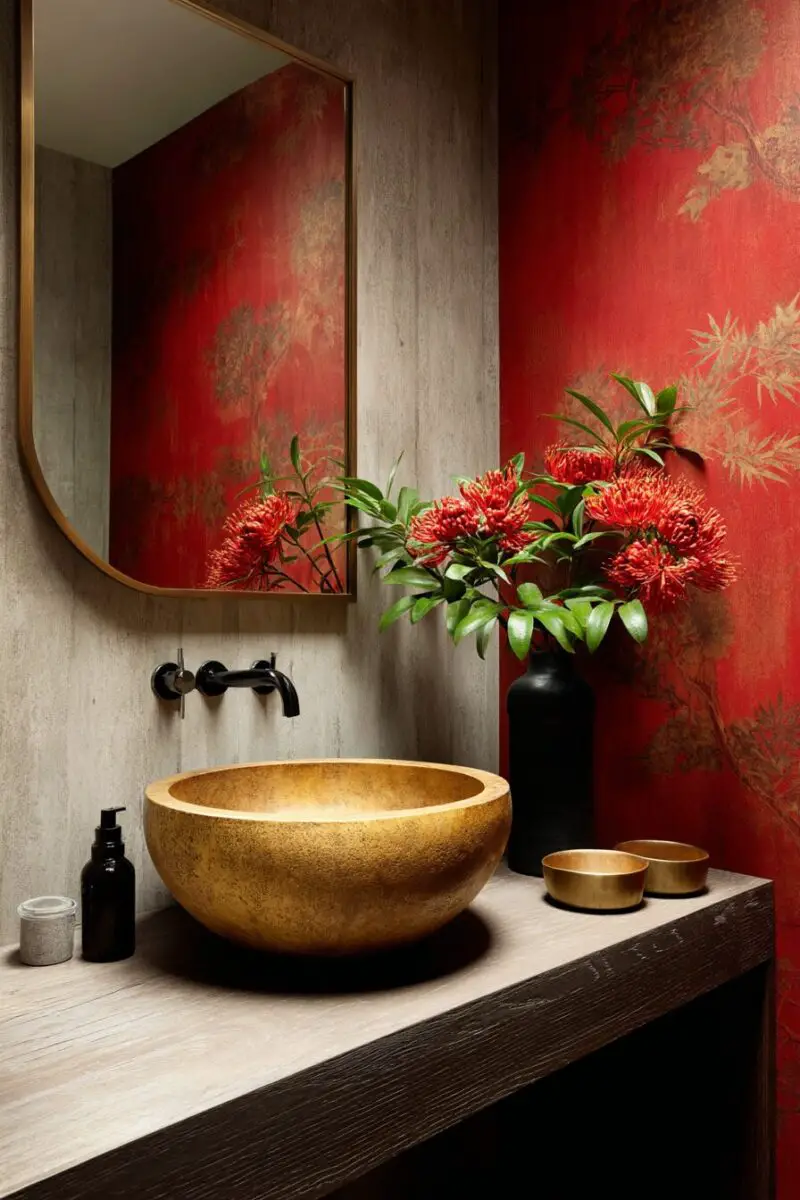
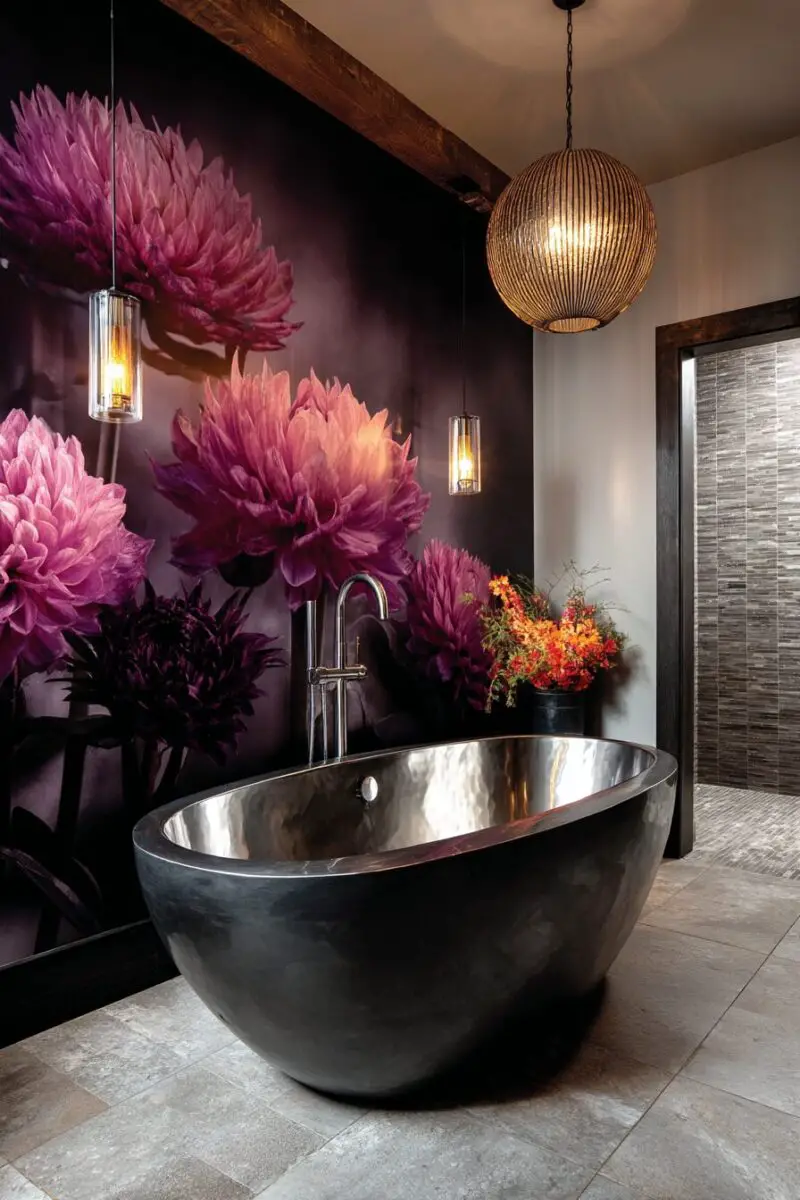
A single attention-commanding wall transforms ordinary bathrooms into extraordinary personal sanctuaries through concentrated visual impact.
The statement wall concept allows for bold design choices that might overwhelm if applied throughout the entire space.
Dramatic wallpaper patterns once considered impractical for bathrooms now thrive thanks to modern moisture-resistant formulations designed specifically for humid environments.
Textured options including three-dimensional tiles, stone veneers, or wood panels add tactile interest beyond mere visual patterns.
Vertical gardens or preserved moss installations bring living elements to bathroom walls, requiring minimal maintenance while delivering maximum impact.
For permanent architectural interest, consider shiplap, beadboard, or applied molding patterns that create shadow lines and dimensional effects.
Tile installations offer infinite creative potential, from classic subway arrangements to Moroccan fish scales or dramatic hexagonal patterns.
Large-format tiles minimize grout lines for a more monolithic appearance while making installation and cleaning simpler.
Metallic elements introduce light-reflecting properties, with options ranging from subtle shimmer to dramatic copper or gold leaf applications.
Artistic options include hand-painted murals, decals, or even framed textile pieces protected from moisture with appropriate sealing.
Position your statement wall strategically – behind the vanity creates a flattering backdrop for daily routines, while featuring the bathtub area enhances relaxation moments.
Remember that small bathrooms often handle bold statements more successfully than larger spaces, where dramatic treatments might become overwhelming.
For rental properties or those wanting occasional changes, removable wallpaper or large-format art protected from moisture offers non-permanent options.
The most successful statement walls complement rather than compete with other bathroom elements, creating harmonious designs rather than visual chaos.
Vintage-Inspired Elements with Modern Comfort
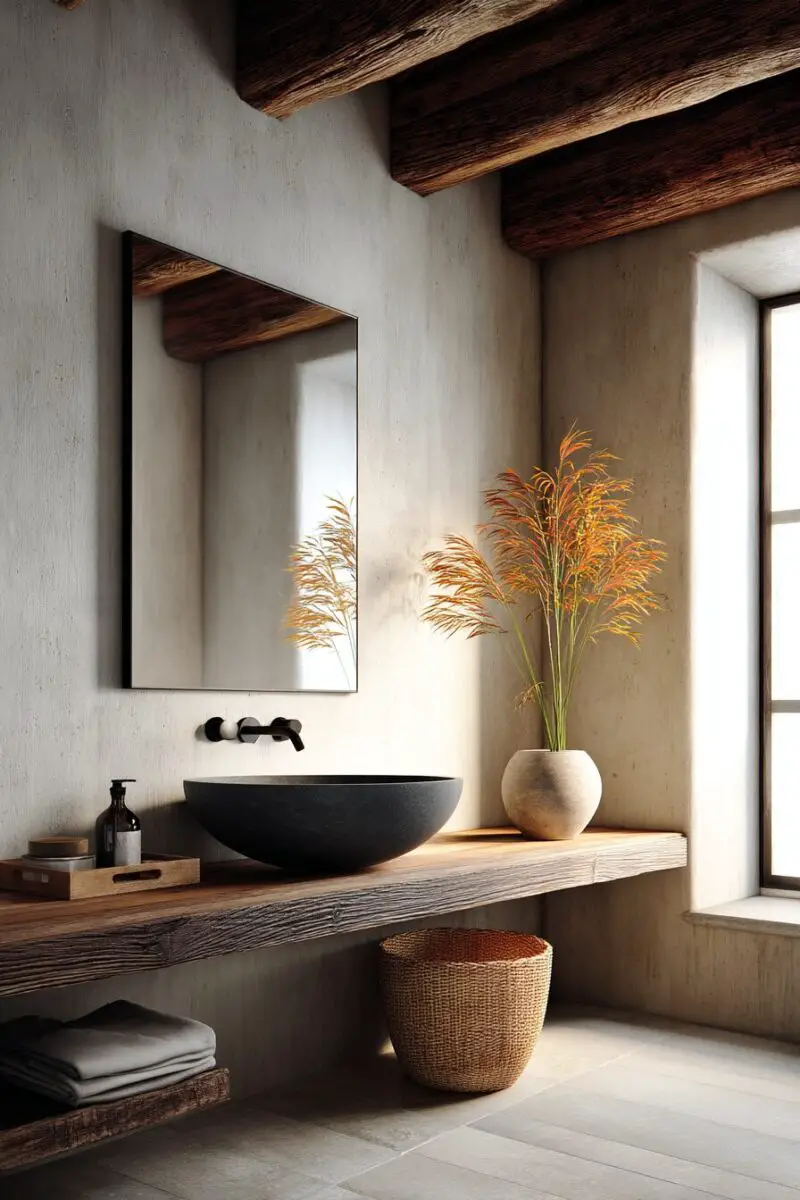

Nostalgic bathroom designs evoke comfort through familiar forms while incorporating contemporary conveniences invisible to previous generations.
The appeal lies in creating spaces that feel established and timeless rather than recently constructed or trendy.
Claw-foot tubs represent perhaps the most iconic vintage bathroom element, now available with updated materials that retain heat better than original cast iron.
Pedestal sinks deliver classic silhouettes while modern versions offer discrete storage solutions concealed within their seemingly traditional forms.
Subway tile remains perennially popular, though contemporary interpretations include handmade versions with slight irregularities that add character and warmth.
Consider hex tile flooring in either traditional white with black accents or more colorful patterns that reference early 20th century designs.
Hardware and fixtures offer easily updated vintage touches through cross handles, bridge faucets, and exposed plumbing components in brass, bronze, or nickel finishes.
Lighting choices significantly impact period authenticity, with schoolhouse globes, sconces with fabric shades, or milk glass fixtures referencing specific design eras.
Wood wainscoting protects walls while adding architectural interest, particularly when painted in historical colors researched for period authenticity.
Medicine cabinets with beveled mirrors and simple frames replace built-in contemporary versions for more characteristic storage solutions.
Window treatments might include cafe curtains, simple roller shades, or shutters that reference practical historical approaches to privacy.
Incorporate authentic salvaged elements when possible – antique mirrors, repurposed furniture converted to vanities, or architectural fragments as decorative elements.
Color palettes typically favor more muted, complex tones rather than bright primary colors, with sage greens, dusty blues, and warm neutrals dominating historically inspired spaces.
Modern comforts can be discreetly integrated, with heated floors beneath period-appropriate tiles or powerful ventilation systems concealed behind decorative grilles.
Accessories complete the vintage vision, from apothecary jars and wire baskets to traditional soap dishes and toothbrush holders in ceramic or glass.
Remember that truly successful vintage-inspired designs interpret rather than strictly replicate historical precedents, creating functional spaces for contemporary living.
Color Psychology for Emotional Bathroom Design
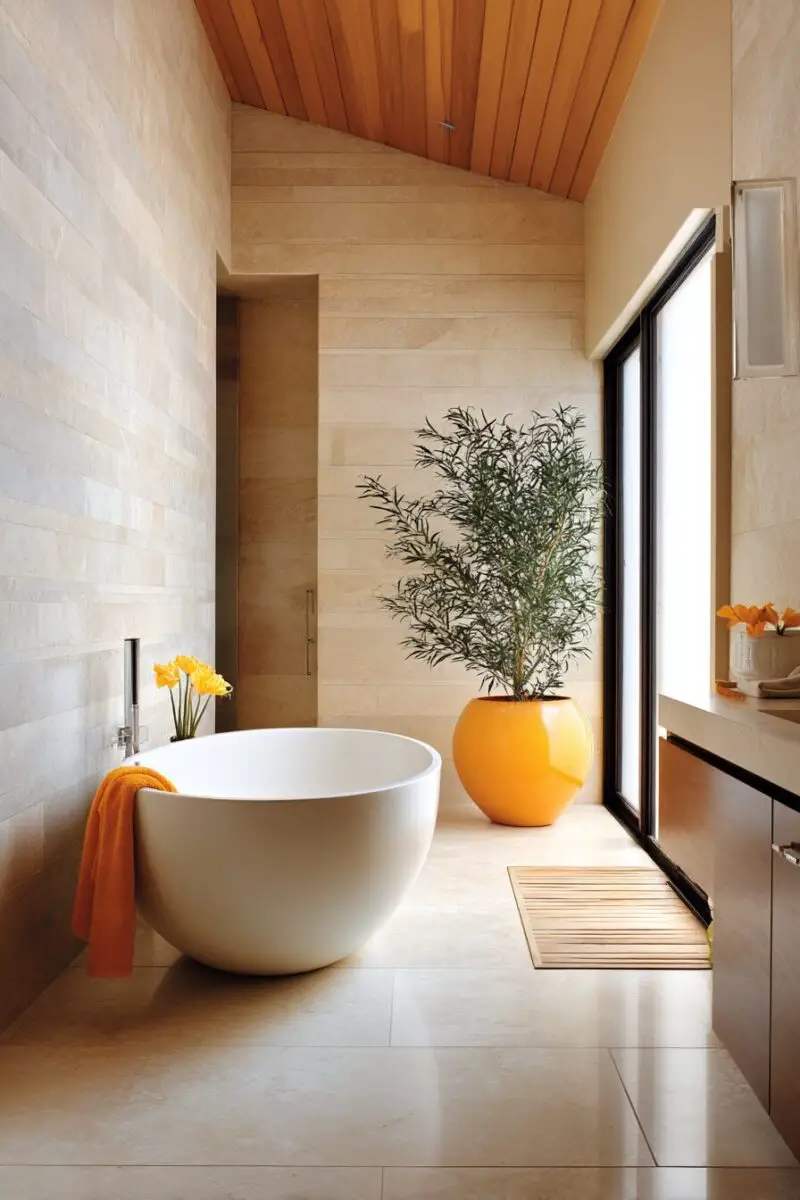
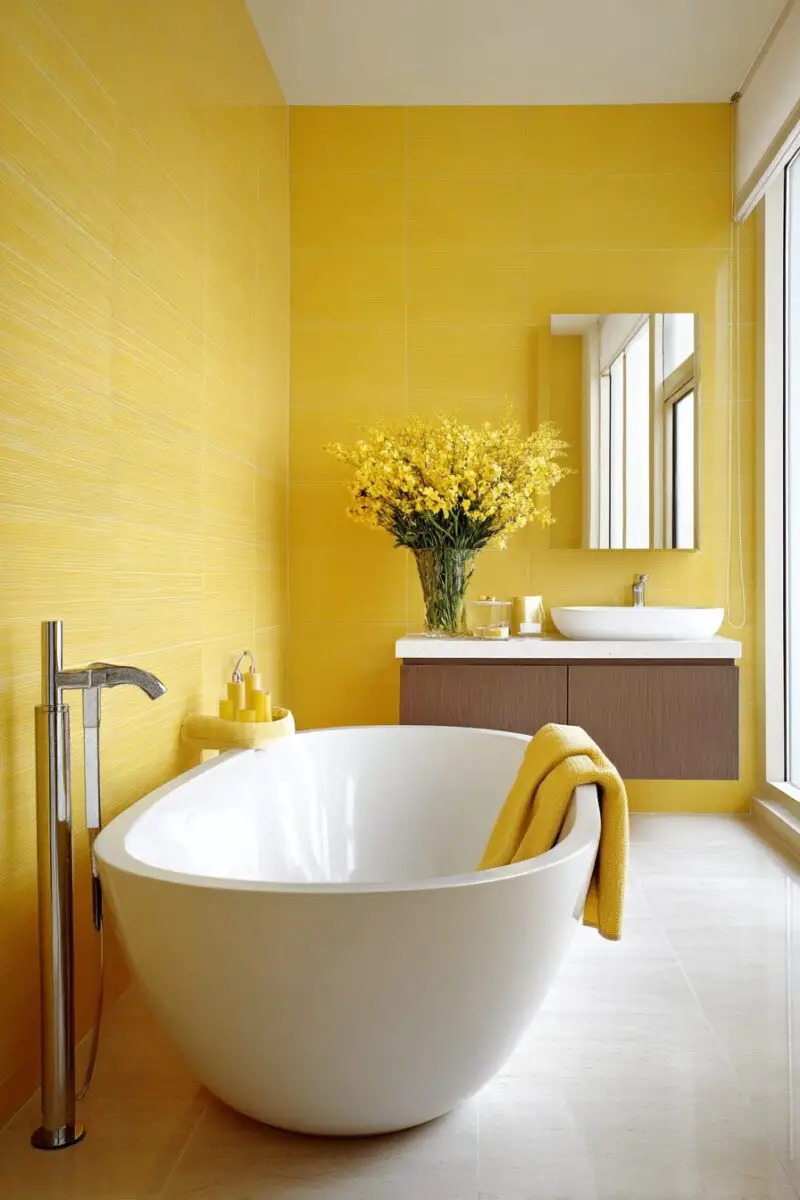
The colors surrounding you during private bathroom moments profoundly impact your emotional state far beyond mere aesthetic preferences.
Strategic color choices transform ordinary bathrooms into mood-enhancing environments tailored to your specific psychological needs.
Blue tones consistently rank as bathroom favorites for their associations with water, sky, and their documented ability to lower blood pressure and heart rate during stressful days.
Green introduces nature’s most abundant color into your indoor sanctuary, with studies showing its effectiveness in reducing anxiety and promoting feelings of balance.
Spa-like sage greens provide sophisticated neutrality while still delivering the psychological benefits of this restorative color family.
White bathrooms, when thoughtfully executed with varied textures and materials, create impressions of cleanliness and spaciousness that many find mentally clarifying.
Avoid stark, clinical whites by incorporating warm undertones or pairing with natural elements that prevent sterile feelings.
Surprising research supports pink bathrooms for their documented ability to reduce aggressive feelings and promote nurturing emotions during your self-care rituals.
Modern interpretations move beyond saccharine associations toward sophisticated blush tones and terracottas with significant depth and nuance.
Yellow introduces optimism and energy, particularly valuable in windowless bathrooms that lack natural light sources.
Personal Storage Solutions That Enhance Relaxation

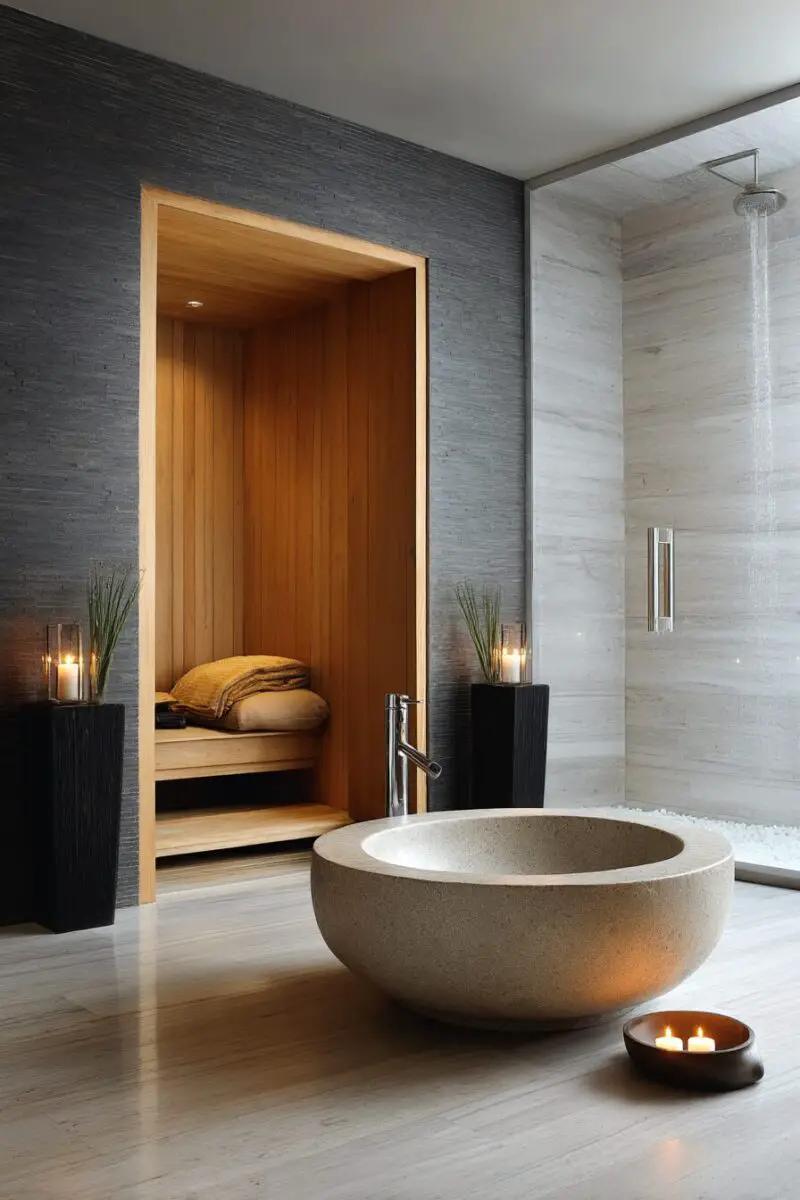
Well-designed storage transforms bathroom experiences by eliminating visual clutter while keeping essentials conveniently accessible.
The goal should balance practical organization with aesthetic contribution to your overall design vision.
Built-in cabinetry provides the most efficient storage, with custom dimensions that maximize every available inch including challenging corners and recesses.
Drawer organizers specifically designed for bathroom items prevent the common jumble of products, with adjustable dividers accommodating bottles and tubes of varying heights.
Vertical storage maximizes limited floor space, with tall cabinets or étagères reaching toward ceilings for items used less frequently.
Open shelving introduces display opportunities alongside practical storage, though requires greater discipline in maintaining orderly arrangements.
Baskets introduce warmth and texture while corralling similar items, from rolled towels to toilet paper reserves to children’s bath toys.
Medicine organization deserves special attention, with lockable storage for prescriptions and clearly labeled systems for managing multiple family members’ needs.
Vanity drawer design has evolved significantly, with options including pull-out steps for children, specialized makeup organization, and heat-resistant styling tool storage.
Towel storage presents both practical necessity and design opportunity, from simple hooks to decorative ladders to hotel-inspired stacked displays.
Remember that bathroom storage requires special consideration for humidity and splashing, with proper ventilation and moisture-resistant materials preventing damage.
Adjustable and modular systems allow reconfiguration as needs change, particularly valuable in family bathrooms serving different ages and stages.
The most successful bathroom storage quietly supports routines rather than demanding constant maintenance or reorganization.
Remember that creating a truly cozy bathroom involves engaging all your senses – from visual beauty to tactile comfort to aromatic pleasure.
The most successful bathroom designs reflect personal preferences rather than simply following trends, creating spaces that genuinely resonate with your definition of relaxation.
Now is the perfect time to evaluate your current bathroom and identify which of these ideas might most meaningfully enhance your daily experience.
